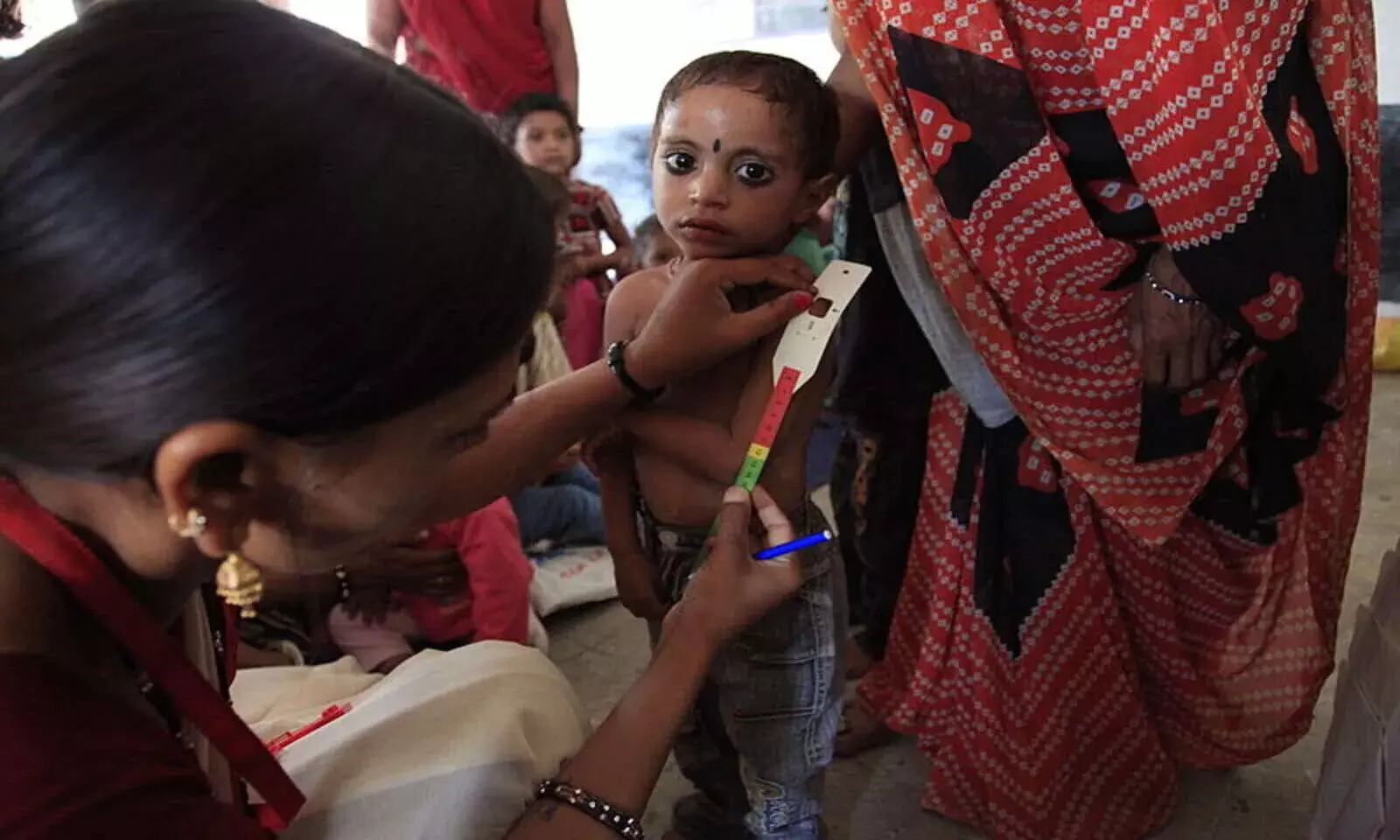Is UP Most Malnourished, Has Worst Health Infra & Most Custodial Deaths?
A Youth Congress leader claimed all of the above is true, but it's not, prove official records

Photo: Wikimedia Commons
Rajasthan Youth Congress Spokesperson Yuvraj Singh Yadav, on January 10, 2022, claimed that Uttar Pradesh topped in worst health infrastructure, custodial deaths and malnutrition in the country during the last five years.
"During the BJP regime, UP ranked number one in worst health infrastructure, it ranked number one in custodial deaths and also ranked number one in malnutrition," Yadav can be seen saying in a video posted by Youth Congress on social media platforms Twitter and Facebook.
उखाड़ फेंको भाजपा सरकार। pic.twitter.com/OBH3JAZOze
— Youth Congress (@IYC) January 10, 2022
The posts have been archived here and here.
FactChecker verified Yadav's claims against official records, which proved most to be either false or misleading. Here's what we found.
Health Infrastructure
The key indicators of healthcare infrastructure are average number of functional hospital beds, ratio of doctors, nurses and paramedical staff, health support services and core health care services per one lakh population.
Beds: According to NITI Aayog's 2021 report on district hospitals, UP has 13 beds per 1 lakh population, which is much lower than 22 beds per 1 lakh population as recommended by the Indian Public Health Standards (IPHS) 2012 guidelines. With 13, UP stands fourth from the bottom with Haryana and after Bihar (6), Jharkhand (9) and Telangana (10). Here, Puducherry fares the best with 222 beds per 1 lakh population.
While UP has the highest number of primary health centres, sub-centres and community health centres in the country, there has been a 2.3% dip in all three categories — 24,369 health centres in 2019-20 from 24,964 in 2017-18.
Medical Staff: Against 0.86 national average ratio of doctors in position across hospitals as per IPHS, UP has 0.64, which is the ninth worst in the country. Top of the list is Delhi with 2.5.
When it comes to nurses and paramedics, Uttar Pradesh stood fifth and 17th from the bottom, respectively. Against the national average ratio of nurses of 0.60 and paramedics of 1.54 in position across hospitals, UP had 0.43 and 1.43.
The World Health Organization has prescribed a doctor patient ratio of 1:1000. But UP's average allopathic doctor-population ratio was 1:3692 and average allopathic+AYUSH doctor-population ratio was 1:1756 — which are the seventh worst and eight worst ratios in the country, respectively.
Custodial Deaths
The two sources FactChecker referred to on custodial deaths provide different figures. According to National Crime Records Bureau's Crime in India reports, UP recorded four custodial deaths in 2017, zero in 2018 and 2019 and one in 2020. In all these years, it never saw the most custodial deaths in the country, unlike the Youth Congress leader's claim.
The data published by the Union Ministry of Home Affairs (MHA), shows that while the state didn't top in the number of deaths in police custody, it did see the most deaths in judicial custody in the country since 2017.
In 2017-18, UP ranked fourth with 10 cases of death in police custody, in 2018-19, it ranked second with 12, in 2019-20, it ranked eighth with 3 cases and, according to latest figures up to November 30, 2021, UP ranked fourth with 11 cases.
When it comes to death in judicial custody, although UP has seen the number of cases drop, it still has the most among other Indian states, according to MHA data. It recorded 390 cases in 2017-18, 452 in 2018-19, 400 in 2020-21 and 395 in 2020-21.
Malnutrition
Stunting, wasting and underweight are three main indicators of malnutrition. A look at National Family Health Survey-5 (recorded data in 2019-20) and Comprehensive National Nutrition Survey (CNNS) (conducted in 2016-18) proves that while UP isn't the worst performing state under these indicators, the prevalence of malnutrition in UP is still very high.
In 2019-20, UP stood third in share of stunted children under five (39.7%) and fifth among children under four in 2016-18 (38.8%). In wasting, it bagged the 16th spot for under 5 children (17.3%) in 2019-20 and eighth in children aged under four (18.5%) in 2016-18. The state stood 10th in underweight children below five (32.1%) in 2019-20 and fifth in those aged four or less (36.8%) in 2016-18.
FactChecker spoke to Yadav for a clarification on his statement and he said that he based his claims on news reports. He asked to be sent all the data and that he would respond after, but he hadn't by the time of publishing this article. If and when he does, this story will be updated.


